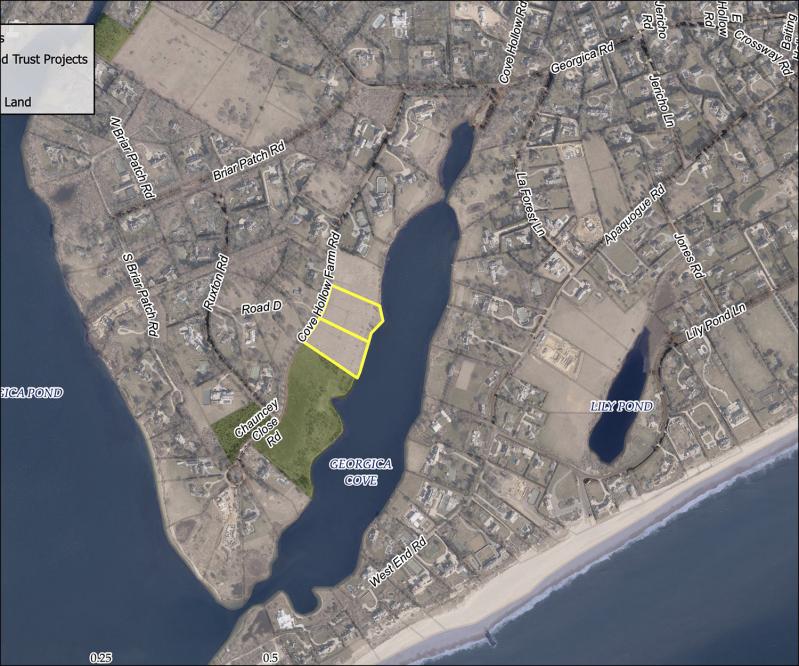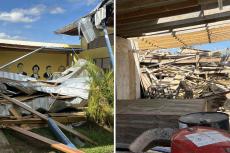The East Hampton Town Trustees will write a letter to the town board supporting the purchase of two parcels fronting Georgica Cove by the Peconic Land Trust, which is at present in contract, and the simultaneous sale of an easement to the town and to East Hampton Village to ensure their preservation in perpetuity.
The request for a letter of support came from Kim Quarty, executive director of the Friends of Georgica Pond Foundation, during the trustees’ meeting on Monday. Ms. Quarty previously spent 17 years with the Peconic Land Trust.
’“Peconic Land Trust has been working really closely with the neighbors to come up with private funding for this acquisition as well as public funding for the preservation,” Ms. Quarty told the trustees, who have jurisdiction over many of the town’s waterways and bottomlands, including Georgica Pond. The land trust’s purchase and simultaneous sale of an easement “would add to the assemblage of protected land on the north side of the cove.”
Adding the parcels to the already protected land would create “almost 20 acres of protected land on the cove, which as you know was always compromised,” Ms. Quarty said. Georgica Pond was afflicted with toxic blooms of cyanobacteria, or blue-green algae, for several summers. The Friends of Georgica Pond Foundation has led a yearslong, multifaceted mitigation effort that is proving successful.
“Not having any development there would be not only advantageous aesthetically, but would really contribute to the health of the pond,” she said. The land trust would maintain the acquired land as a maritime grassland.
Spraying Over Accabonac
In other news from Monday’s meeting, John Aldred told his colleagues that the vector control division of the Suffolk County Department of Public Works will conduct an aerial application of mosquito larvicide at Accabonac Harbor this week in order to suppress the insect’s numbers. The decision followed a survey of larvae at the harbor by Mr. Aldred and Glyn Vincent of the Accabonac Protection Committee.
“We went out again this morning and there were quite a few” larvae in samples, Mr. Aldred said. “Quite often you may see only one or two in a dip,” he said, describing the technique in which samples are collected. On Monday, 15 to 60 larvae were found in each sample, “which is high.” The quantity of larvae was consistent across all survey locations, he said.
The county regularly applies larvicide via helicopter over areas deemed hotspots for mosquito breeding, but this week’s application, which could happen today, represents the county’s first application of larvicide, usually Methoprene and Bacillus thuringiensis israelensis, or Bti, over Accabonac Harbor in 2025. Since 2017, regular samples taken by the trustees, Accabonac Protection Committee representatives, and other volunteers have been relayed to the county, which then determines whether larvicide application is warranted. The program has resulted in a greater than 80-percent reduction of pesticide applied there.




